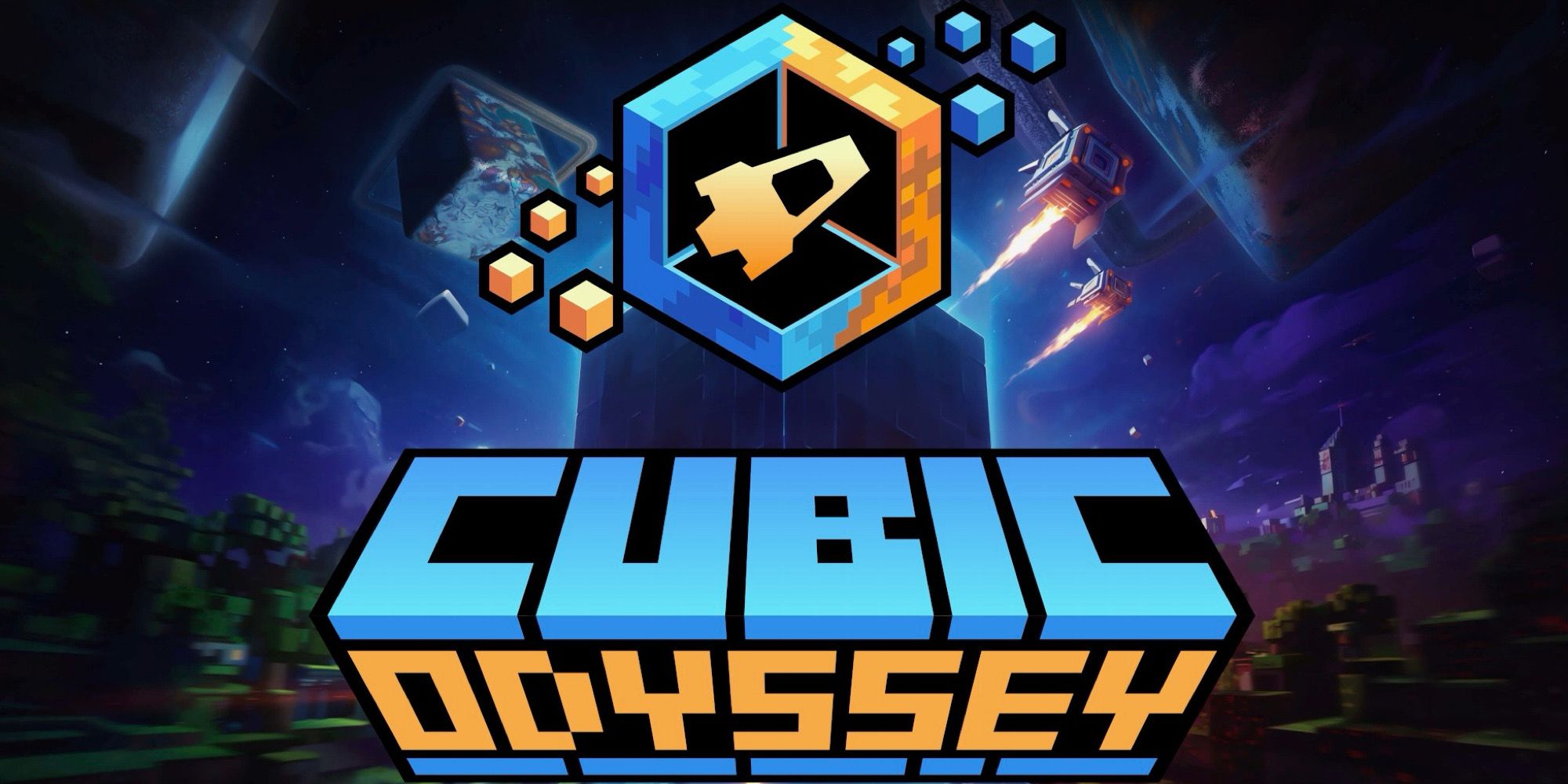
I’ve always found myself captivated by games that prioritize construction and creation over narrative development. Titles such as No Man’s Sky and Minecraft showcase diverse approaches within this genre. Cubic Odyssey is another contender in the space exploration, mining, and crafting realm; however, the question remains: does it offer fresh concepts to earn a place at the table?
Initially, I approached this review with modest anticipation since the game appeared quite similar to ones I’ve previously played. However, it was clear that Cubic Odyssey didn’t shy away from comparisons. Instead, it seemed to embrace them boldly.
Following its launch, Cubic Odyssey truly caught me off guard with the numerous innovations it introduced to the genre, however, these improvements were accompanied by certain aspects that I’m not particularly fond of at the onset of the gameplay experience.
The Cube World
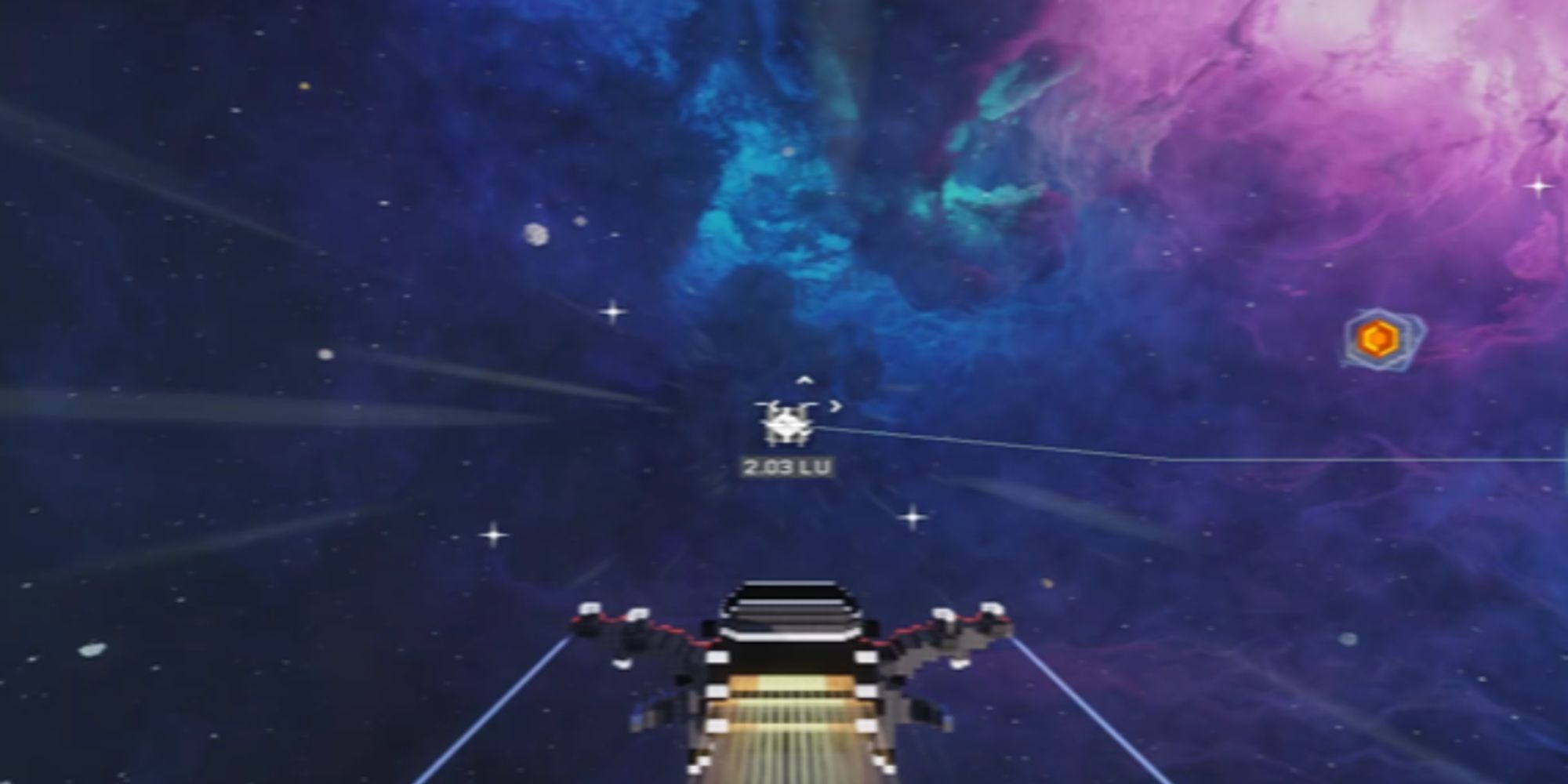
As a gamer, what truly captivated me while playing this game was the visual appeal of the ground below teeming with beauty scattered here and there. However, the real brilliance of the game unfolds when I gaze upwards into the infinite expanse of space. The breathtaking skybox is a sight to behold, but once in the cosmos, surrounded by colossal swirling nebulae stretching in every direction, it’s hard not to feel completely immersed and awestruck.
While it’s important to note that the planets in Cubic Odyssey don’t offer a variety of landscapes like some other games might, the distinctiveness lies in the fact that each planet serves as an individual, isolated ecosystem or biome within its own small map.
As an explorer, I’ve come to realize that every universe I traverse has its unique characteristics. Some are predominantly watery, while others are almost entirely magma. The diversity doesn’t stop there; each world is constructed from distinct materials, creating a fascinating tapestry of landscapes. One planet might boast mushroom trees, another coral, and yet another something entirely unexpected.
Each planet boasts remarkably distinct landscapes, each with its own enchanting qualities. Consequently, every world hosts its exclusive array of plants and animals, some more adorable than others.
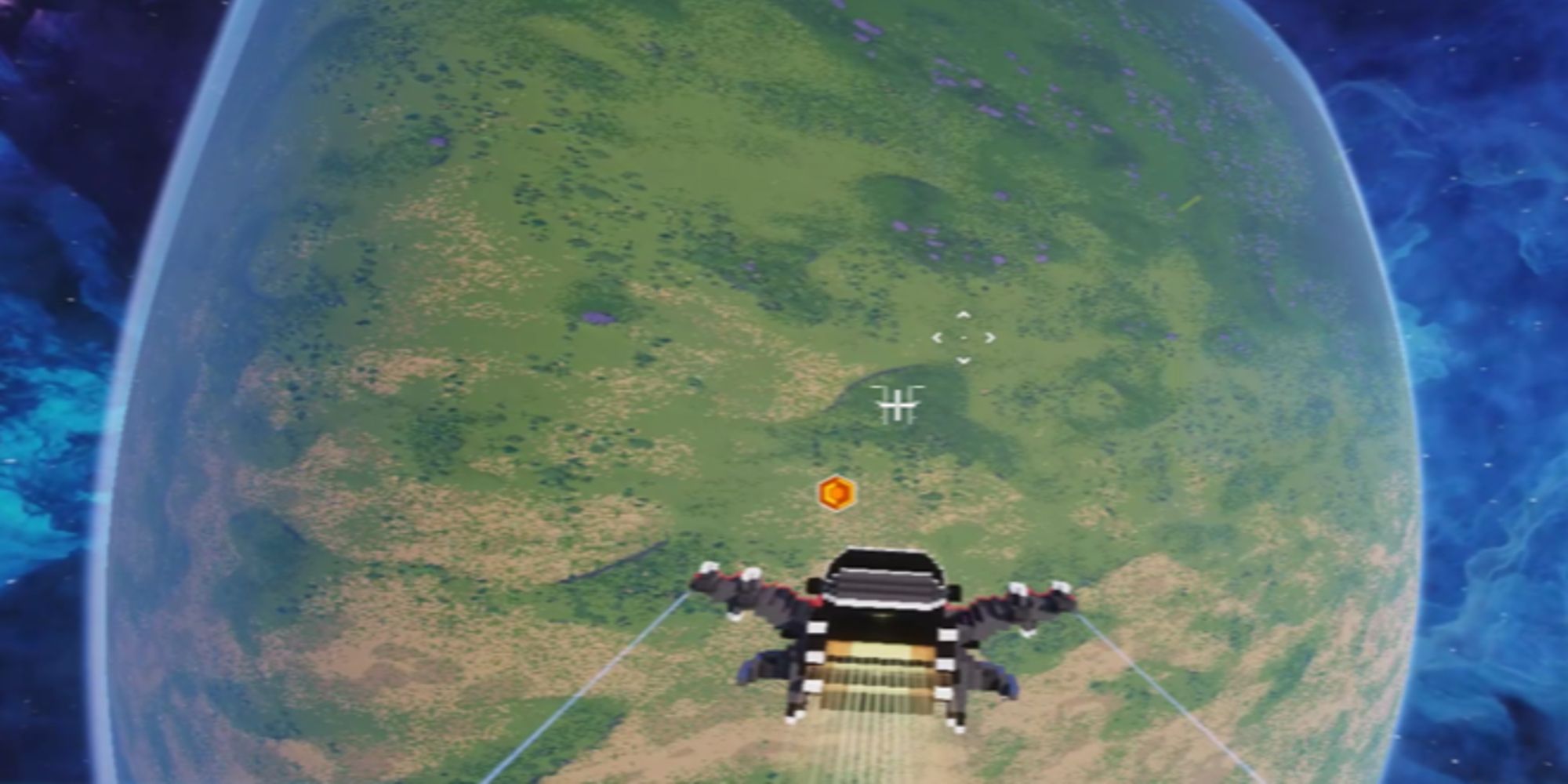
What truly captivates the eye is not just the space itself, but the breathtaking planets within it. Each one appears like a cube, and as you draw near, the planet starts to distort and enlarge, leading you straight into its detailed topographical layout.
Every single visit to a new planet left me utterly astonished with its stunning sight. The mesmerizing spectacle of the planet changing shape as I drew closer was nothing short of breathtaking, offering some of the most awe-inspiring entrances I have experienced.
The game didn’t put too much strain on my computer, though there were the occasional instances where it would briefly lag, losing a few frames. However, these issues weren’t significant. Lower-performance computers might face challenges, but most users should be able to run this game smoothly on their systems.
Journey Across the Universe
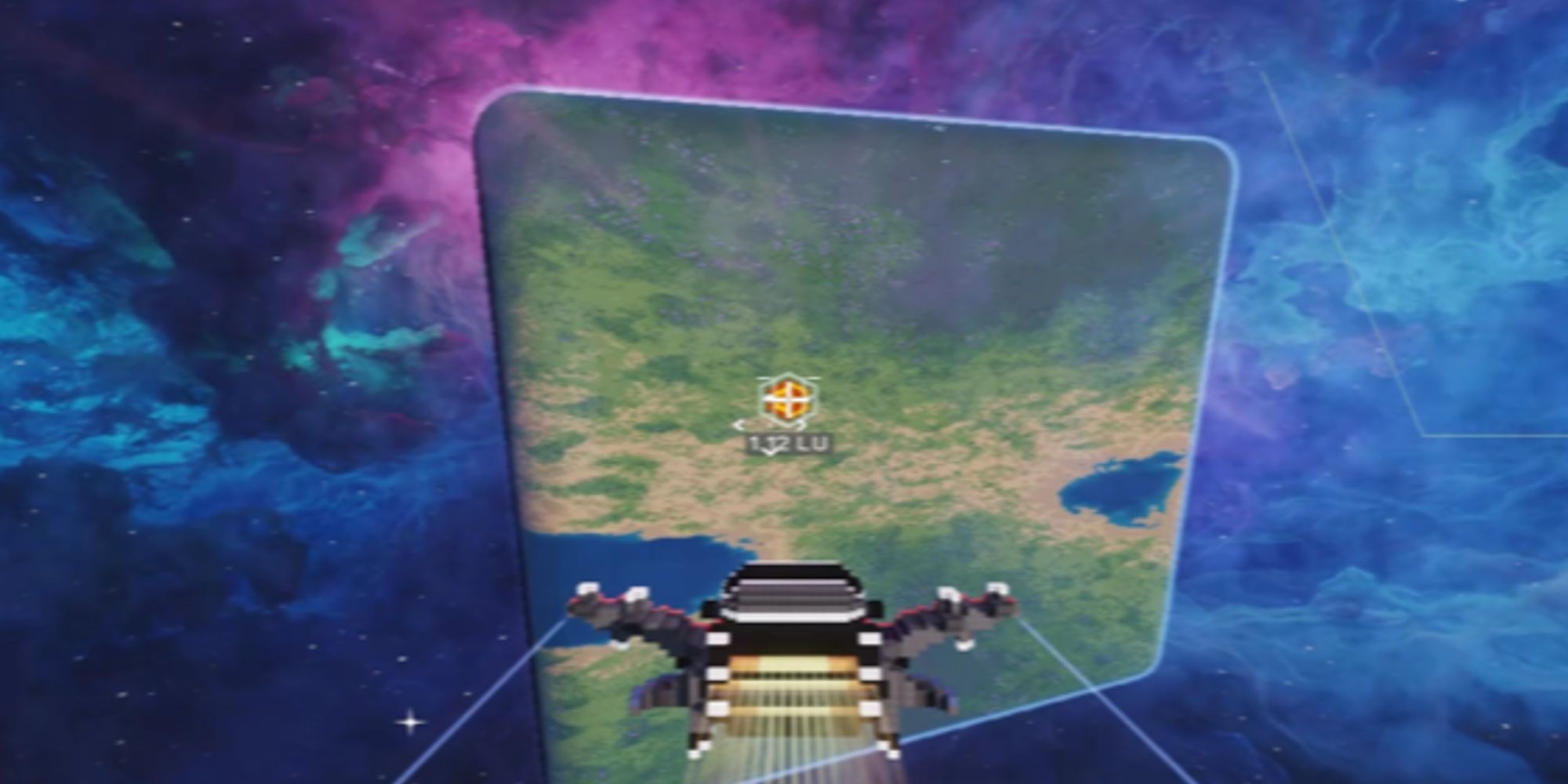
Though the storyline may not shatter any boundaries, it will propel you towards progressively challenging planets in search of specific resources. Each planet offers distinct minerals and items essential for crafting your necessary gear.
It appears that the game seems to entice you to establish a presence on other planets, but in truth, it isn’t essential as you can effortlessly set up on planets rich in resources for maximum benefits. The sole motivation to progress is to unlock a new shop item crucial for enhancing your gear.
While it may not be the most compelling motivation, the fact remains that it stops you from being stationary on a single planet indefinitely. However, you should expect to spend a considerable amount of your time on planets that are not linked by warp portals.
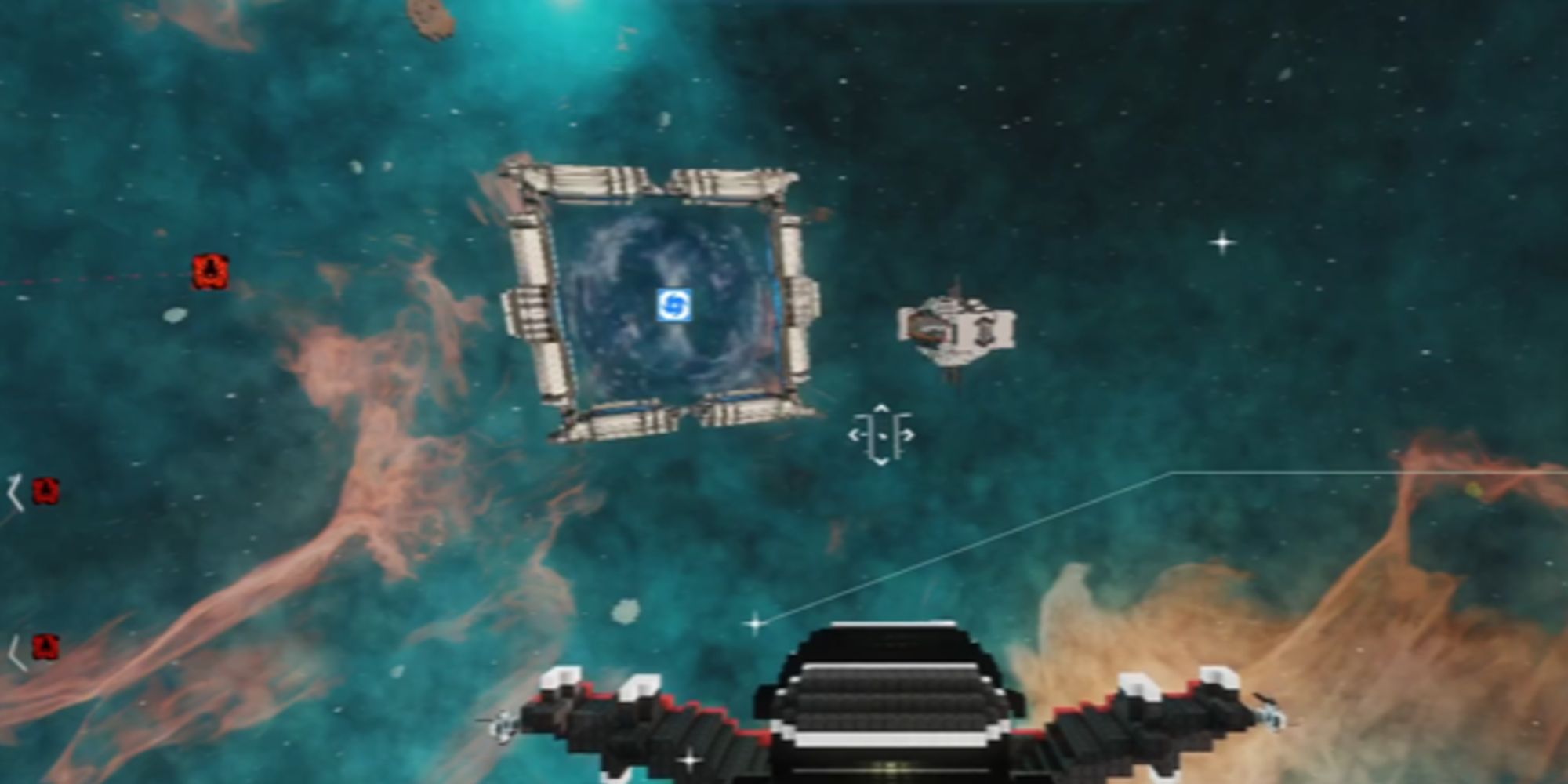
On a particular planet, you might spend some moments collecting resources. Later, by using a pre-existing warp gate within the system, you can travel instantaneously to any galaxy you’ve previously explored. Acquiring a warp core, which may initially take time, is not necessary for this quick intergalactic transit.
As a gamer, I’m thrilled about this advantage! It allows me to journey to galaxies brimming with Ancient Templals, equipped with warp gates of their own. By conquering these temples, I can expand my list of teleportation destinations. Plus, the warping process is swift, making it a breeze to zip between my outposts!
Through innovative thinking, the team has introduced numerous fresh concepts to this field, leaving an enduring mark on it.
Beyond its scant narrative and necessity for upgrades, there isn’t a strong incentive to explore the cosmos, yet you’ll probably do so anyway out of sheer curiosity, similar to my experience. Acquiring better gear certainly simplified the game, but in a sense, it eventually made the game overly simple.
Welcome to the World of Tomorrow
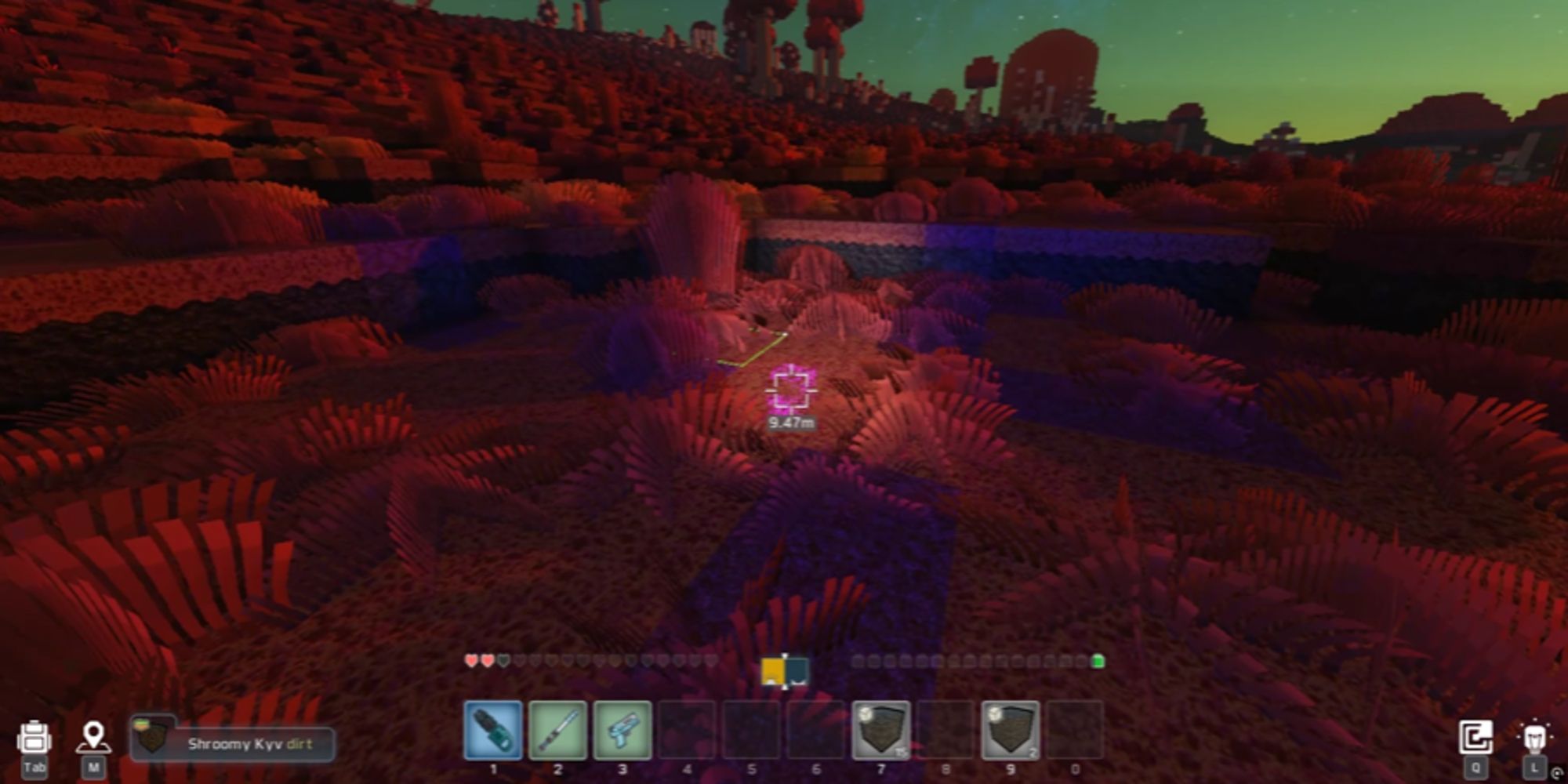
This game excels in streamlined features that simplify repetitive tasks typical of the genre, thanks to clever design. The developers have introduced numerous innovative concepts to the genre, which are expected to leave a lasting impression.
The game introduces several fresh improvements that could redefine the genre, however, these innovations might also lead to some unintended issues. In other words, while it’s trying to stand out from its predecessors, there’s a risk it may encounter new challenges along the way.
The durability of these items is now independent of how often you use them. Instead, their durability decreases whenever you perish, similar to the mechanics found in certain classic Massively Multiplayer Online Games (MMOs). This implies that if you take care not to die, your equipment and weapons could potentially last forever.
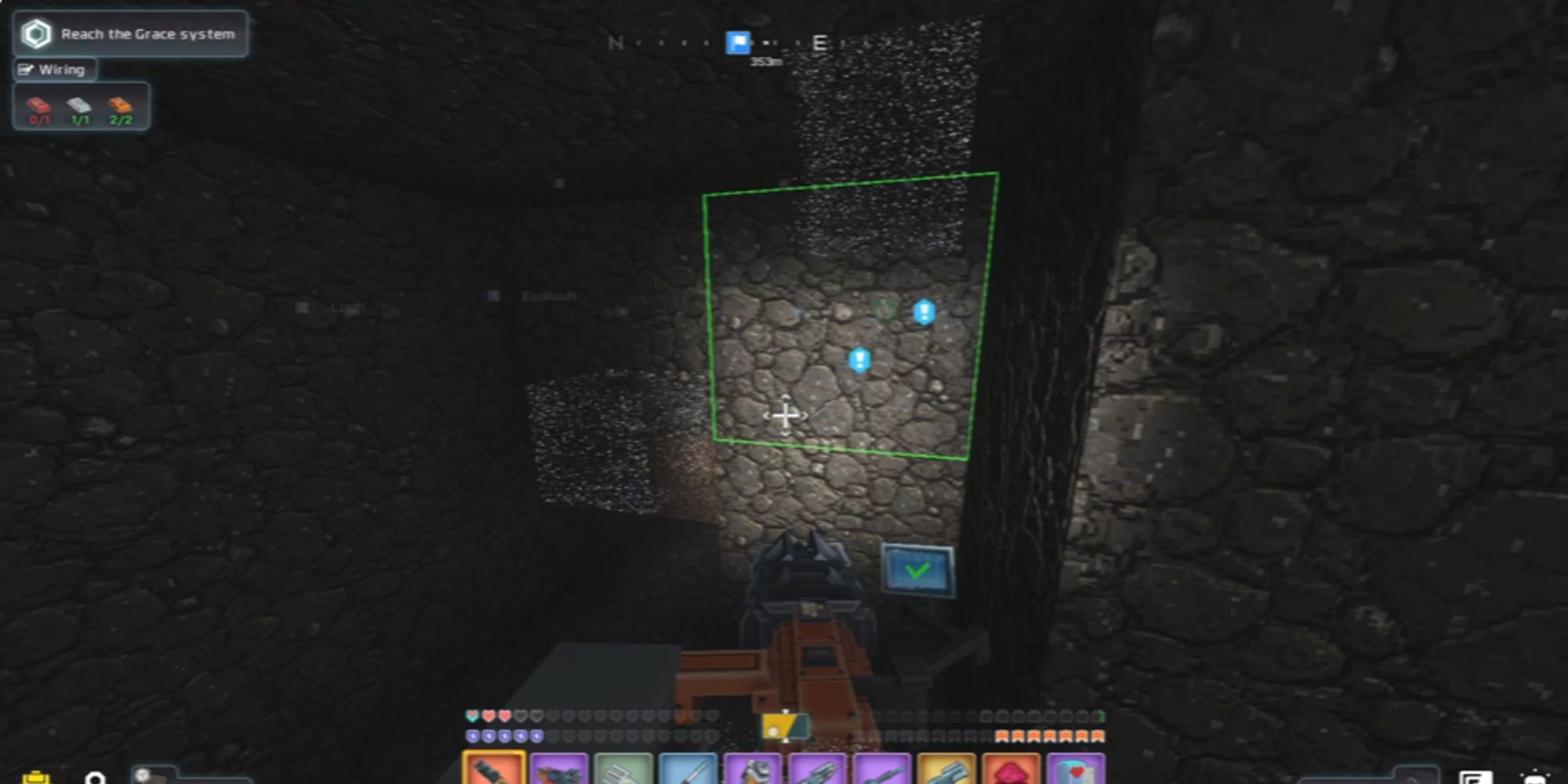
Are you frustrated by constantly grabbing stones and soil while mining? The built-in filtration system ensures that such blocks are picked up only if desired, making the ore-digging process much more manageable. Plus, this convenient tool is easily accessible from your inventory screen, so adjusting settings is always a breeze.
Additionally, when you’re exploring the depths, you have a reliable ally that can identify any types of ore you’ve previously discovered. This makes it much simpler for you to locate what you need, as you can quickly spot similar ores in proximity using a shortcut key.
Incorporating elements such as the jetpack and instant return to the spaceship certainly illuminates some unfavorable traits of this genre in a fresh way. However, with all these exciting enhancements, certain sacrifices were inevitable. Regrettably, for Cubic Odyssey, these adjustments had a negative impact on the initial gameplay experience.
Better Be Duracell
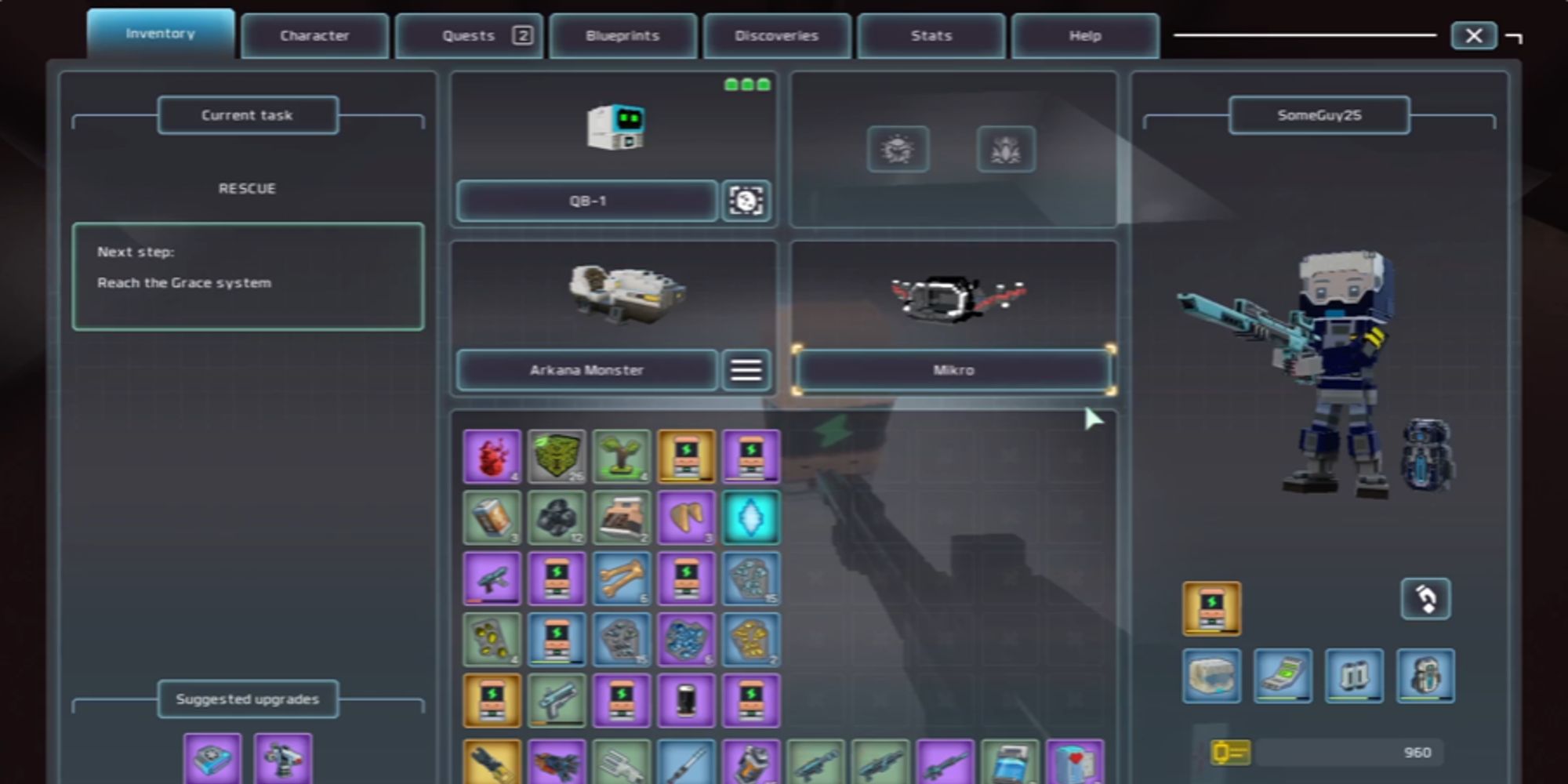
Moving on to discuss some drawbacks, it was quite frustrating for me that nearly everything in this high-tech society relies on batteries.
Every item you own functions only when it has battery power. While acquiring these batteries is not challenging, they can’t be piled up in your inventory, so each spare set you carry takes up an additional space in your inventory.
It’s extremely aggravating when you run out of batteries because it essentially stops everything you’re working on in its tracks. If you want to go for a run, sorry, no power. Fancy a jetpack ride? Same issue. Even trying to teleport back to your spaceship is off the table â you can probably guess why.
It quickly became apparent that carrying extra batteries for your spaceship was essential if you wanted to fully explore the cosmos and engage in space battles with other vessels. Running out of battery power was far more inconvenient than having spare or portable ones on hand.
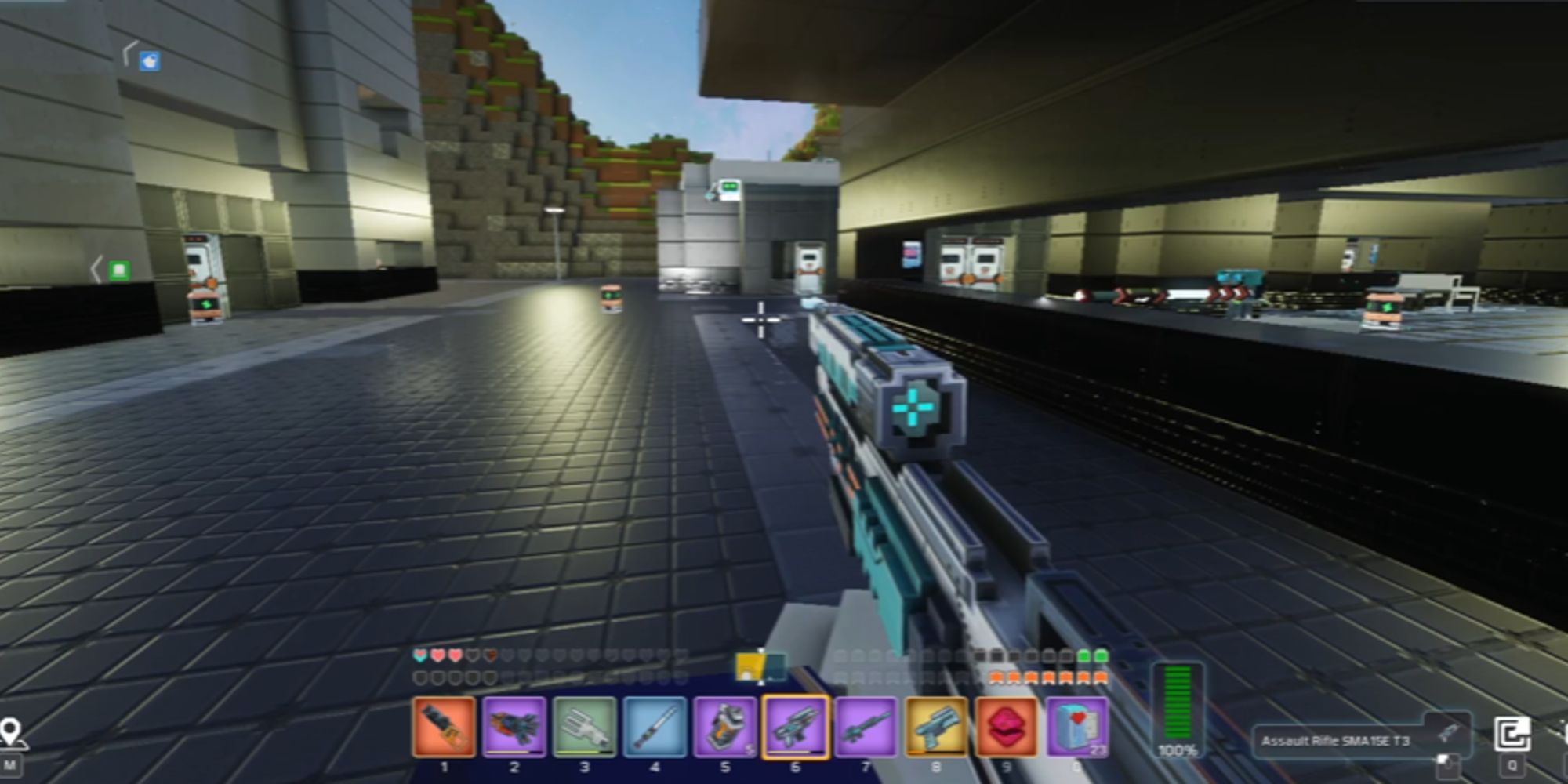
Over time, it becomes practically pointless because every foe you encounter, who appears humanoid, always yields a battery. Consequently, after visiting a couple of planets, I no longer had to manufacture batteries myself as I was gathering plenty instead.
Initially, having an irritating mechanic who was quickly replaced once I became self-sufficient left me questioning the necessity of his role within the system.
Combat for Dummies
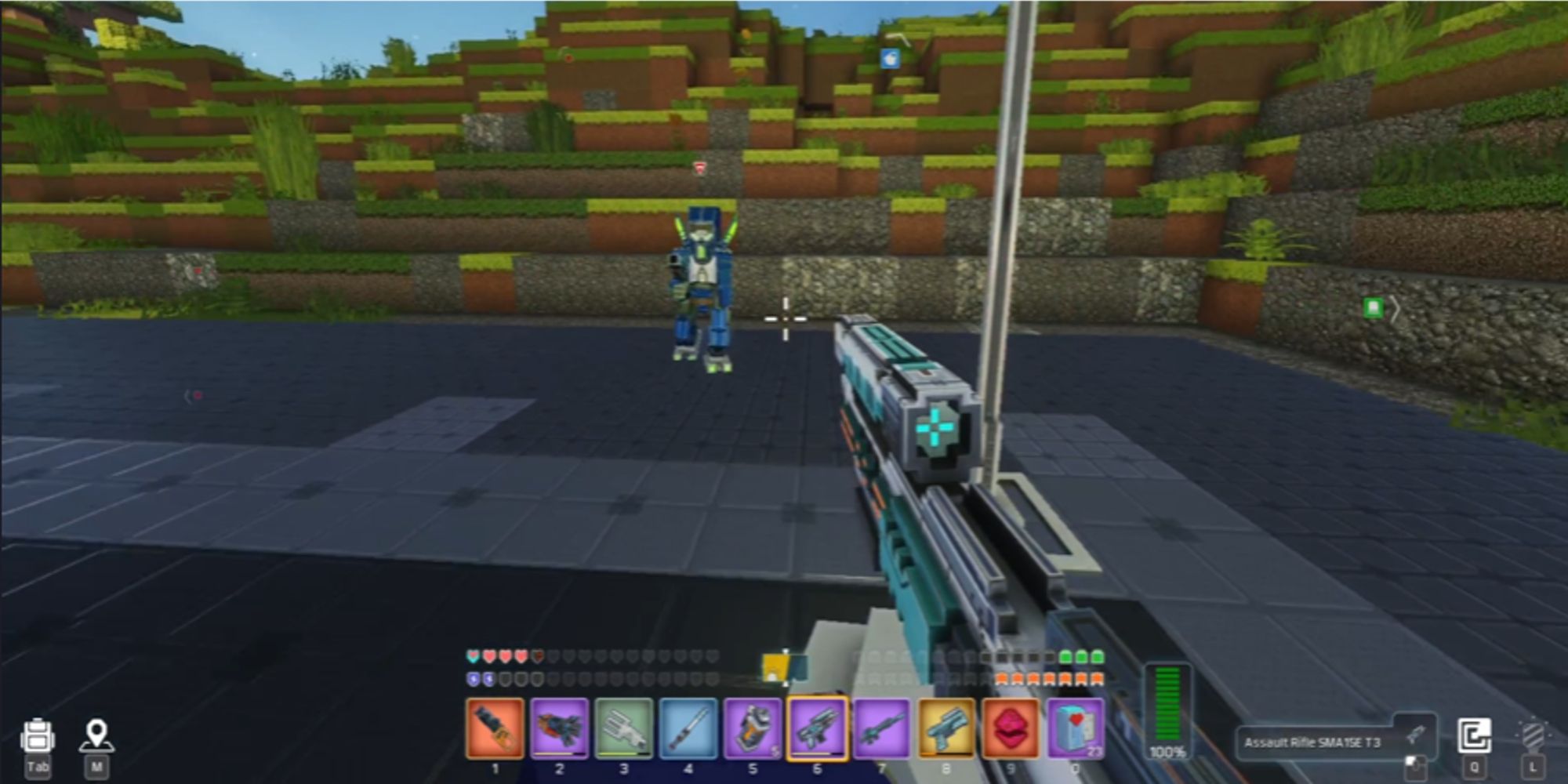
The battle sequences may not be overly complex, but they offer a satisfying challenge due to the variety of tactics enemies can employ with their identical arsenals. They can engage at long range with sniper rifles, close up with shotguns, or use melee attacks based on the weapon they’re carrying.
Initially, fighting may be disheartening because you have no substantial defense, but once you manage to score some victories and gather firearms, many adversaries will fall with just a few rounds fired. However, it’s hardly advisable to employ anything other than long-range weapons due to enemies dealing massive damage in brief, intense attacks.
Engaging enemies is essentially about taking them down from a distance before moving in gradually to avoid being instantly killed. The thrill of eliminating an enemy base with minimal shots is indescribable, yet the disappointment of being defeated with the same number of shots can be quite underwhelming.
In space battles, it often boils down to whether you have sufficient resources for the fight, as every time you discharge your lasers, you deplete battery power. To simplify, the key resource for engaging in combat is a well-stocked supply of batteries.
Crafting Everything
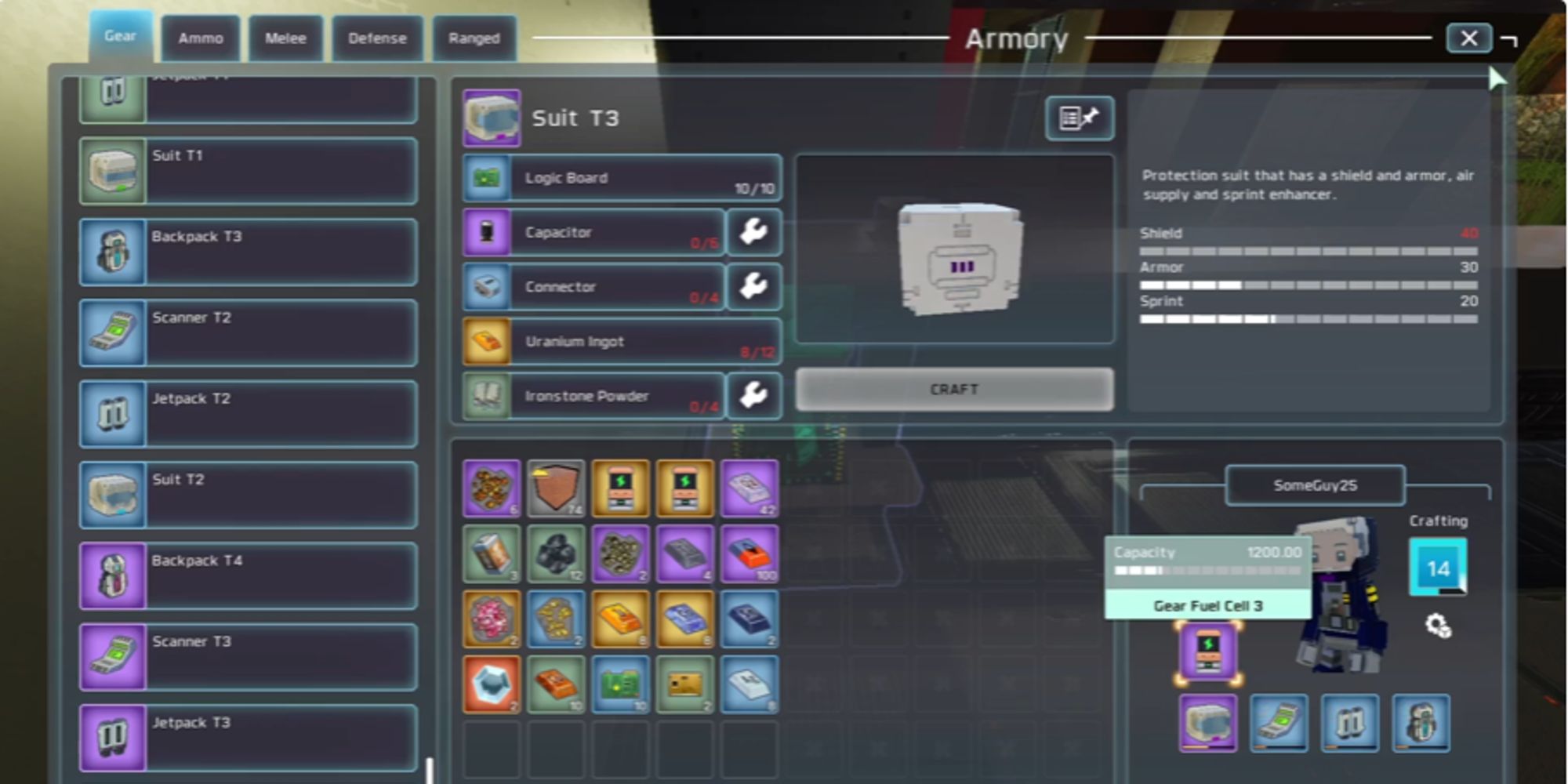
In this survival-style game, you’ll be creating much of your equipment yourself, but the process is more akin to the crafting system in No Man’s Sky than any other game. Instead of using your mined ores directly to produce items or gear, you’ll utilize them to create additional crafting materials which will then be used for further creation processes.
If it seems perplexing to you, don’t fret about it. This particular part of the game was challenging for me to appreciate, but the game simplifies the process as much as possible. Whenever you’re creating something that requires additional components, you can effortlessly make those parts if you have the required ores and items available.
If we weren’t dealing with so many components, this task wouldn’t seem as tedious. For example, if your goal is to create premium equipment and appliances, you’ll require a Capacitor. However, to manufacture that Capacitor, you’ll first need to gather and combine four distinct types of ores.
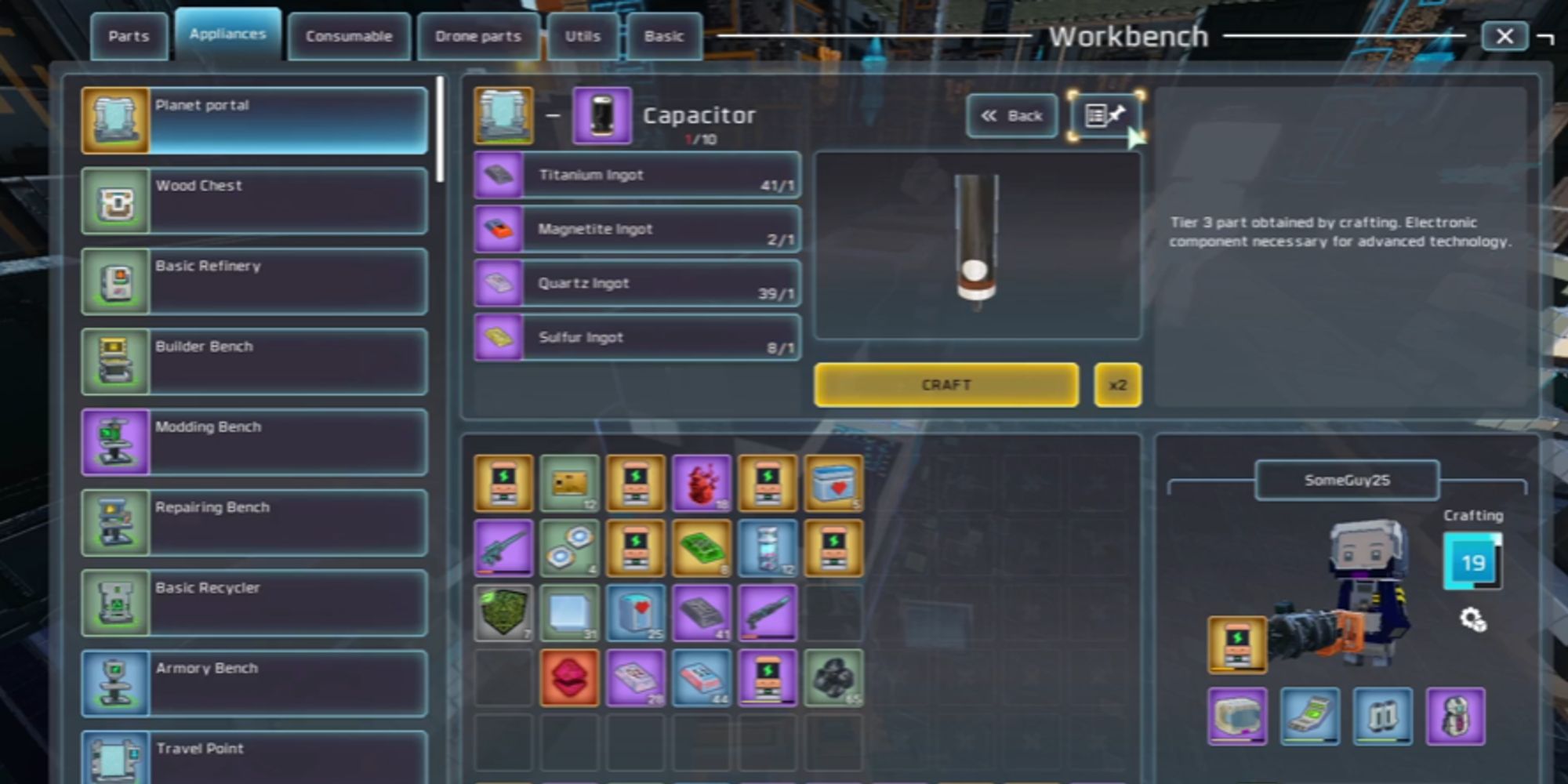
It gets quite tedious having to transport your basic resources to transform them into other materials before finally creating the desired item. What’s convenient about it is the ease of process, but with so many items to craft, attempting to remember each one’s composition could drive you mad.
The game allows you to save recipes on your screen for quick access when shopping, but it’s frustrating to gather lots of ore and materials to craft items just to get the one you really want. Additionally, you can only pin a single recipe at once, making it challenging to keep track of all required items as you progress in the game.
Upgrades People, Upgrades
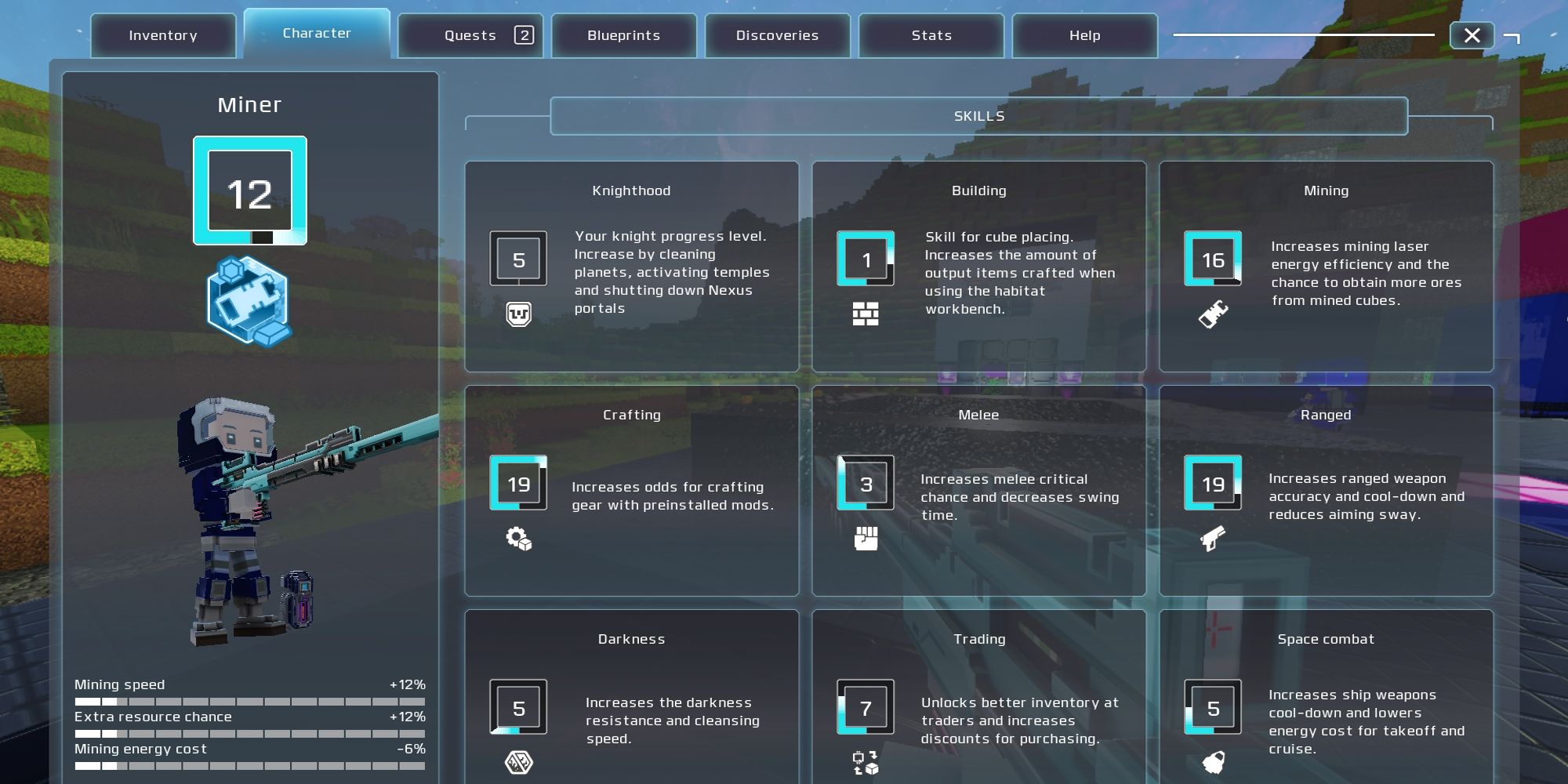
One captivating aspect of this game lies in its mechanism whereby you can enhance your abilities as you employ them, reminiscent of Skyrim. Essentially, this serves as the primary advancement system, enabling you to create, discover, and utilize various other items.
In order to mine specific minerals, you’ll need a more advanced mining tool first. The means to create this tool can only be achieved by boosting your crafting ability. This improvement comes gradually and serves as a good indication of your character’s skill level, but it may feel like another hurdle that seems slightly out of place.
Each skill offers enhancements, such as yielding additional ore from Mining or securing larger discounts when purchasing items. While this feature can be useful, it typically serves little purpose beyond meeting prerequisites for obtaining specific items or equipment.
The Cubic Vibes
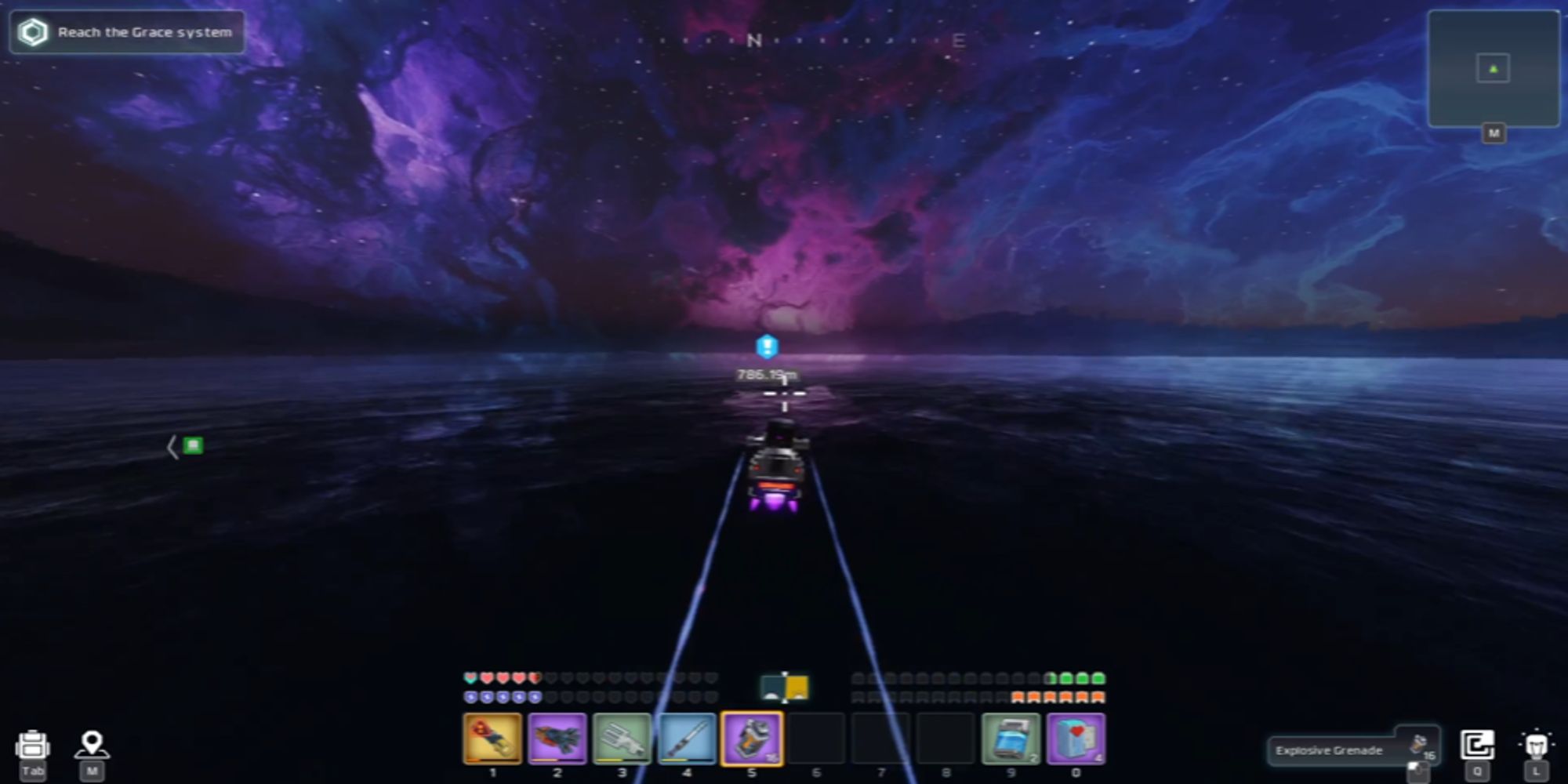
Despite all the issues and grievances I’ve encountered, there’s something about this game that continues to captivate me. The background tunes, atmosphere, and sound effects are simply outstanding, drawing me deep into the game world.
In a manner similar to how Halo’s soundtrack immerses players into a cinematic experience, Cubic Odyssey aims to make players feel as if they are part of an interactive movie through its choice of background music that enhances the game’s overall ambiance.
In terms of ambiance, when you’re into mining, you might sometimes notice a ‘PING’ noise as you crack open ores. This sound not only triggers a burst of happiness in your brain due to the release of certain chemicals, but also indicates that some additional resources have fallen out for you to collect.
This particular aspect, while seemingly minor compared to the bigger picture, adds an element of excitement to the monotonous process of mining. It’s not the only audio detail that catches attention. Just as the Covenant Elites in Halo are easily identifiable by their unique sounds, so too do the adversaries in Cubic Odyssey stand out. However, it could use some refinement as the sound seems to emanate from various directions, but the sound itself is quite memorable, much like the distinctive growls of zombies in Minecraft.
The elements come together to give Cubic Odyssey a unique flavor and feel that leaves an impression, making this game stand out. While it might not always be an exceptional space exploration and crafting adventure, you’ll still find yourself recalling it often.
Closing Comments:
In summary, Cubic Odyssey is an engaging game that can sometimes become overly complex with its character abilities and battery power management. However, it stands out due to numerous quality-of-life improvements and a captivating atmosphere, offering intriguing visuals. Although it might not be a personal go-to game, I believe it will earn recognition in the gaming industry. If you’re a fan of survival exploration games,
Read More
- Jujutsu Zero Codes
- All Exploration Challenges & Rewards in Battlefield 6 Redsec
- Best Where Winds Meet Character Customization Codes
- Top 8 UFC 5 Perks Every Fighter Should Use
- Battlefield 6: All Unit Challenges Guide (100% Complete Guide)
- Upload Labs: Beginner Tips & Tricks
- Kick Door to Escape Codes
- Rydberg Ions Unlock Scalable Quantum Control
- Where to Find Prescription in Where Winds Meet (Raw Leaf Porridge Quest)
- Prestige Perks in Space Marine 2: A Grind That Could Backfire
2025-05-12 11:59